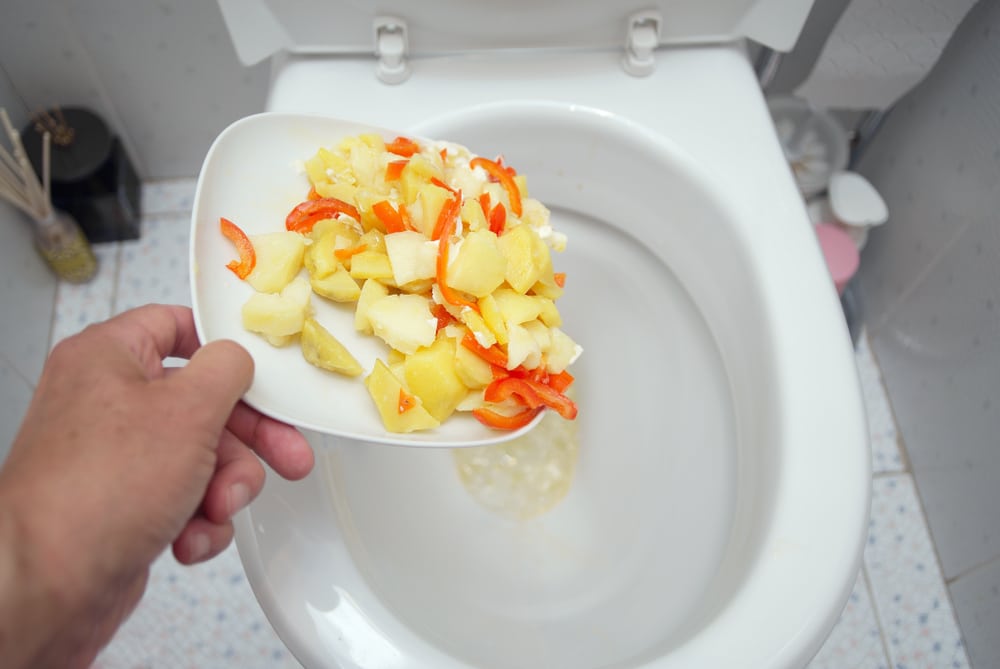Can You to Flush Food in the Toilet?
Can You to Flush Food in the Toilet?
Blog Article
Are you in search of resources involving Think Twice Before Flushing Food Down Your Toilet?

Introduction
Lots of people are usually confronted with the dilemma of what to do with food waste, especially when it comes to leftovers or scraps. One usual concern that develops is whether it's alright to purge food down the commode. In this article, we'll explore the reasons why people might consider flushing food, the effects of doing so, and alternate techniques for appropriate disposal.
Reasons people may think about flushing food
Lack of recognition
Some people may not understand the possible harm caused by purging food down the bathroom. They may erroneously think that it's a safe practice.
Ease
Purging food down the bathroom might seem like a fast and simple service to getting rid of unwanted scraps, specifically when there's no neighboring trash can available.
Idleness
Sometimes, individuals might simply select to flush food out of large laziness, without taking into consideration the effects of their actions.
Consequences of flushing food down the toilet
Environmental impact
Food waste that winds up in waterways can add to pollution and damage marine ecological communities. Additionally, the water used to purge food can stress water resources.
Plumbing issues
Purging food can cause stopped up pipes and drains, causing costly plumbing repair work and aggravations.
Types of food that should not be purged
Coarse foods
Foods with coarse structures such as celery or corn husks can obtain tangled in pipes and cause clogs.
Starchy foods
Starchy foods like pasta and rice can take in water and swell, leading to clogs in pipes.
Oils and fats
Greasy foods like bacon or cooking oils must never be flushed down the commode as they can strengthen and cause clogs.
Proper disposal methods for food waste
Utilizing a waste disposal unit
For homes furnished with waste disposal unit, food scraps can be ground up and purged through the pipes system. Nonetheless, not all foods appropriate for disposal in this manner.
Recycling
Particular food product packaging products can be reused, minimizing waste and decreasing ecological effect.
Composting
Composting is an eco-friendly means to take care of food waste. Organic materials can be composted and used to enhance soil for horticulture.
The significance of correct waste administration
Decreasing environmental injury
Proper waste monitoring practices, such as composting and recycling, assistance minimize contamination and maintain natural resources for future generations.
Shielding pipes systems
By preventing the technique of flushing food down the bathroom, property owners can protect against pricey plumbing repairs and maintain the integrity of their pipes systems.
Verdict
Finally, while it might be tempting to purge food down the bathroom for comfort, it is necessary to recognize the prospective consequences of this action. By adopting correct waste administration techniques and getting rid of food waste responsibly, individuals can contribute to healthier pipes systems and a cleaner setting for all.
FLUSH FOOD DOWN THE TOILET?
FLUSHING FOOD CAN CAUSE BLOCKED DRAINS IN YOUR HOME
All of the plumbing fixtures in your home are connected to the same sewer pipe outside of your home. This outdoor sewer pipe is responsible for transporting all the wastewater from your home to the Council sewer mains. Even small pieces of food that go down the kitchen sink can cause problems for your sewer. It should therefore be obvious that flushing larger bits of food, such as meat, risks a clog in either the toilet itself or the sewer pipes. Flushing greasy food is even more problematic because oil coagulates when it cools, coating the interior lining of your pipes.
THE TOILET IS NOT A BIN
Food isn’t the only thing that people shouldn’t be flushing down the toilet. People use the toilet to dispose of all kinds of things such as tampons, makeup wipes, dental floss, kitty litter and even underwear. Water goes to great lengths to educate residents about the high costs and stress placed on wastewater treatment systems simply from people flushing the wrong stuff down the toilet. It costs taxpayers millions of dollars each year, and homeowners thousands in blocked drain repairs.
FLUSHING FOOD IS A WASTE OF WATER
Flushing food is a waste of our most precious resource - water. In June this year Level 1 water restrictions were introduced to protect water supply from drought conditions. Much of New South Wales continues to be affected by prolonged drought with recent figures revealing up to 97 per cent of the state remains in drought. Depending on whether you have a single or dual flush toilet, every single flush uses between five and 11 litres of water. In the current climate this is a huge amount of water to be wasting on flushing food that should be placed in the bin (or better yet, the compost).
https://www.jabplumbingsolutions.com.au/blog/can-you-flush-food-down-the-toilet

I found that post about while surfing the internet. Appreciated our content? Please quickly share it. Let others locate it. Thank-you for your time spent reading it.
Estimate Free Report this page